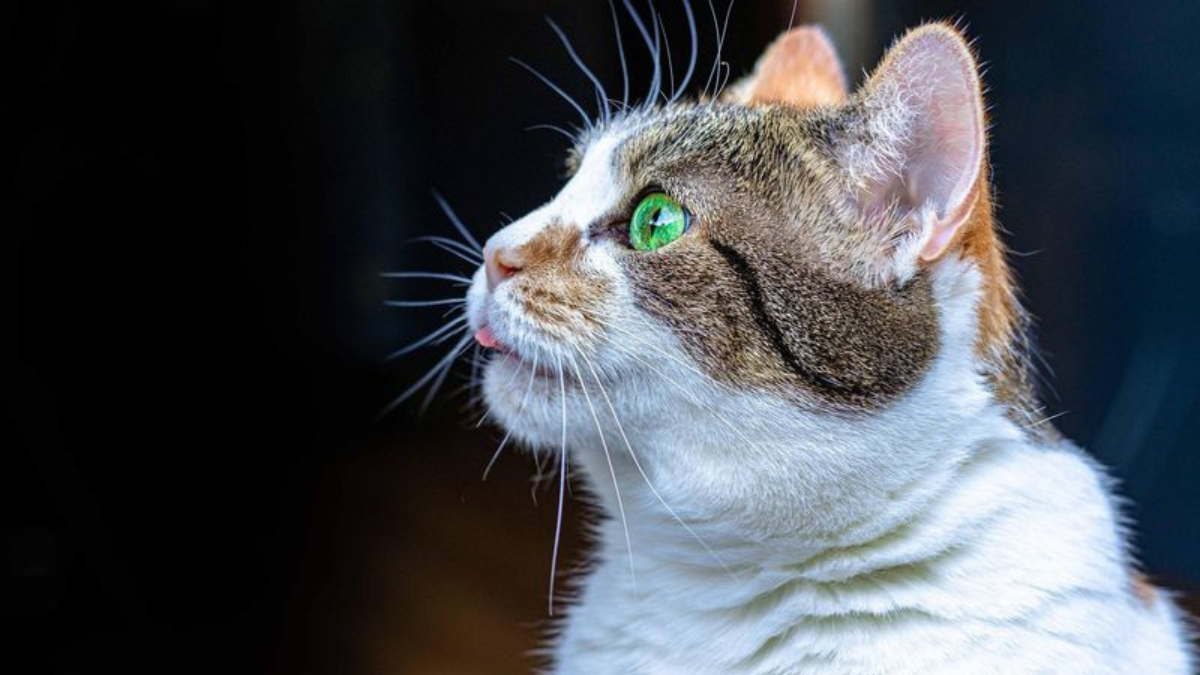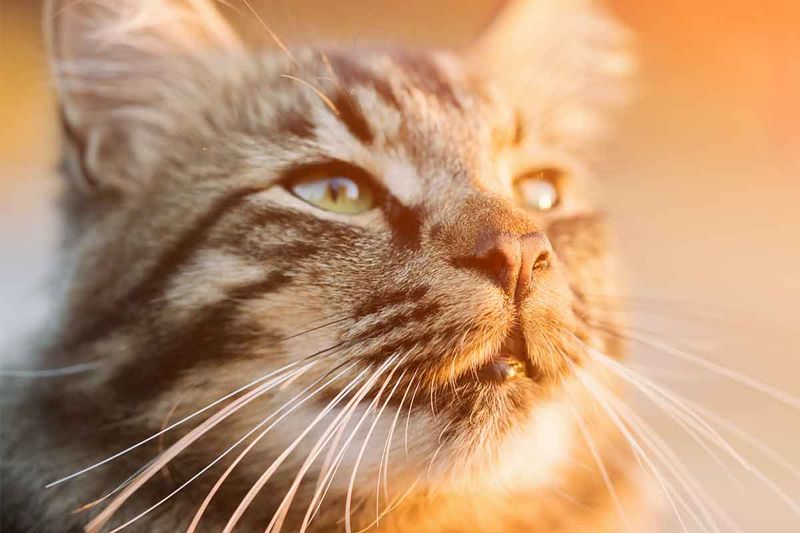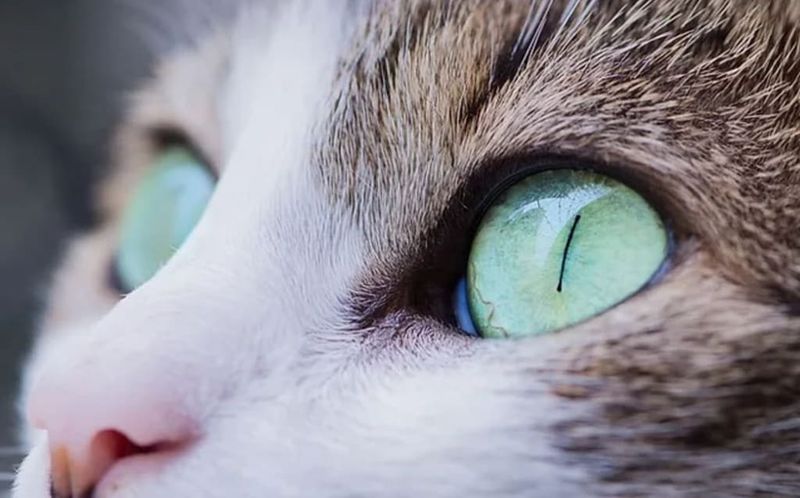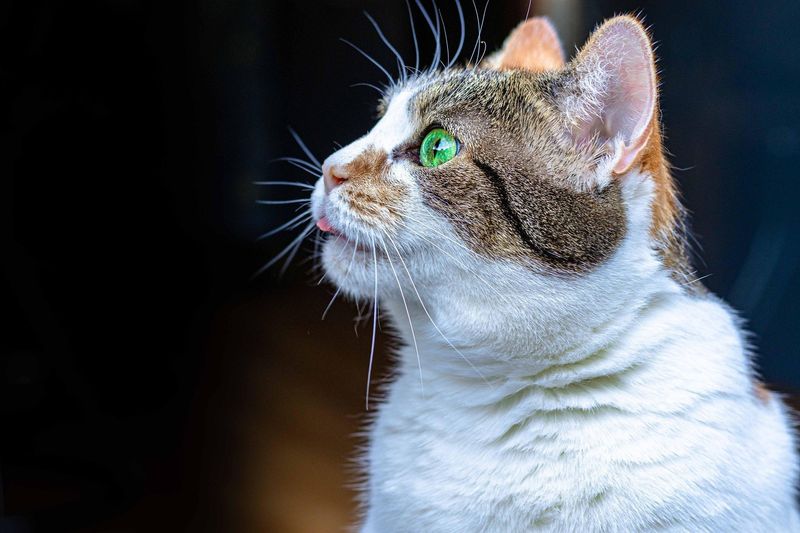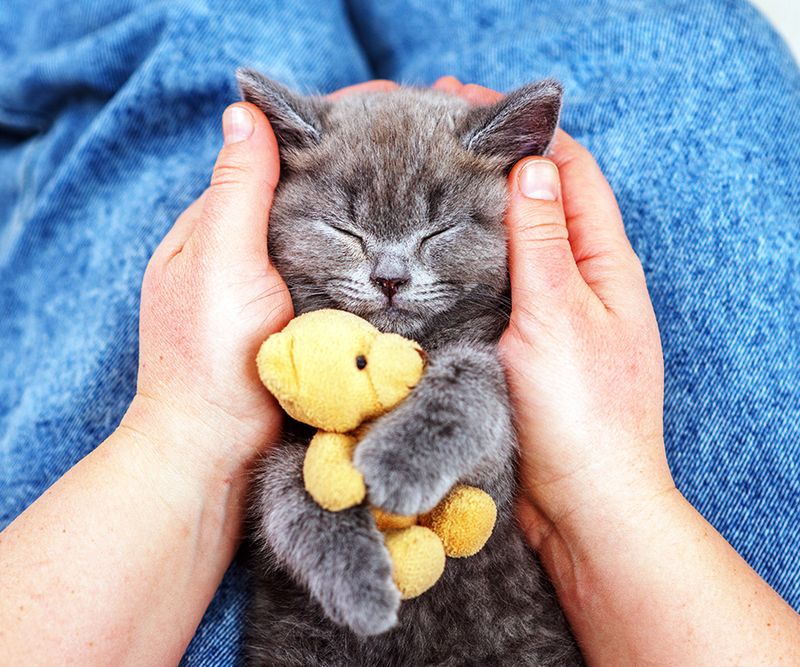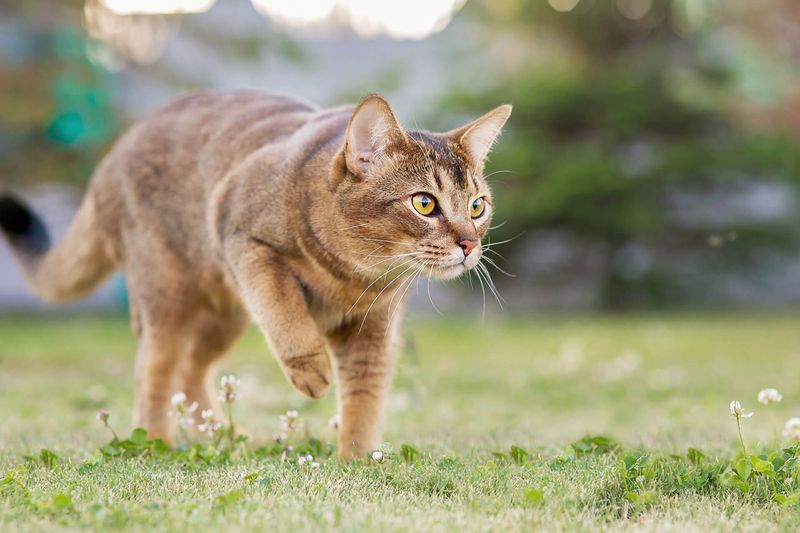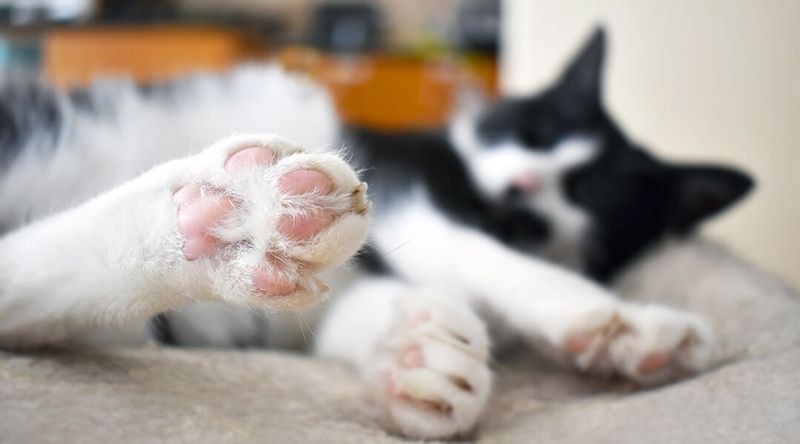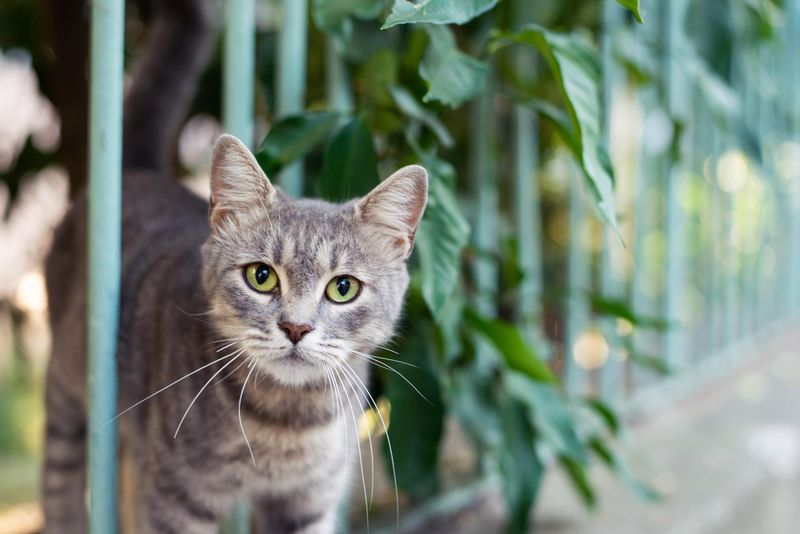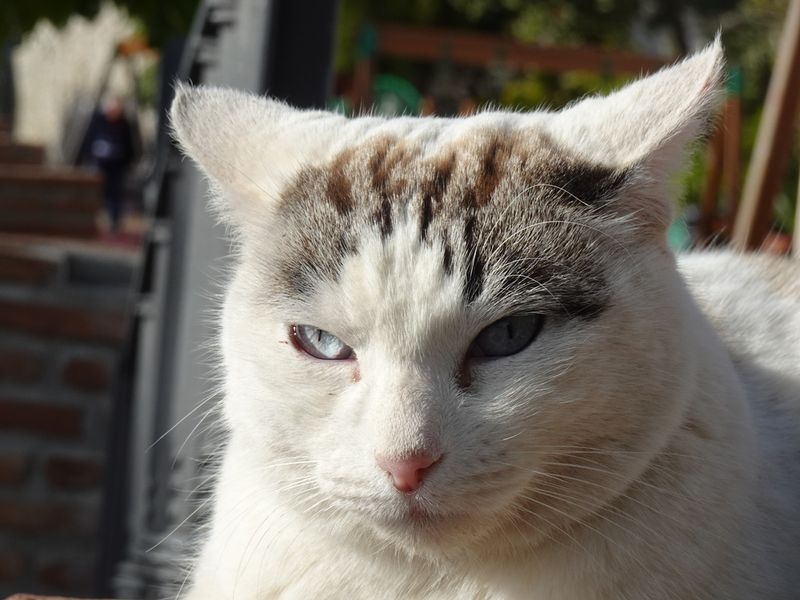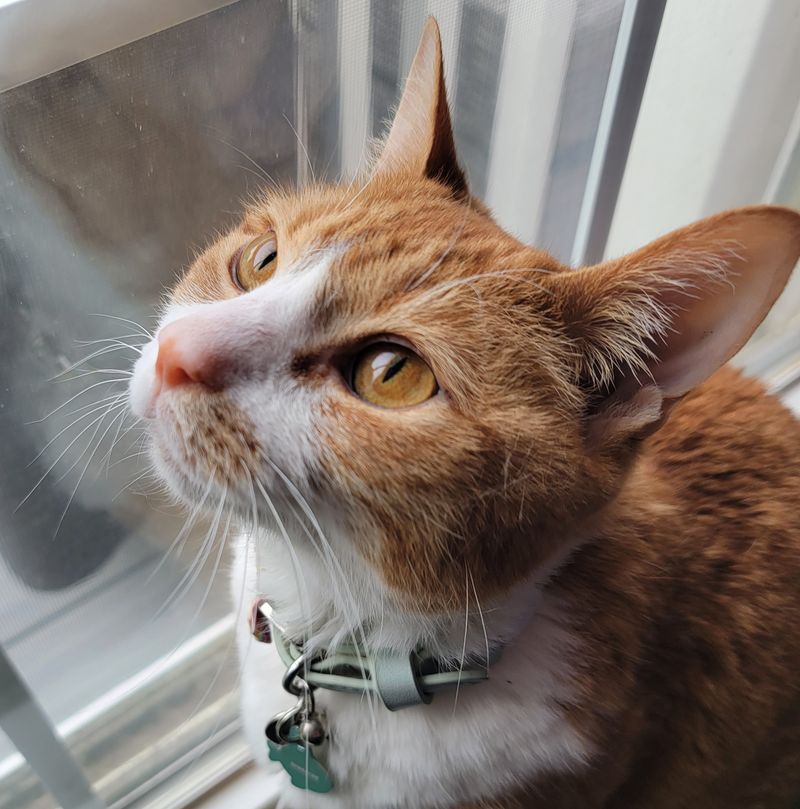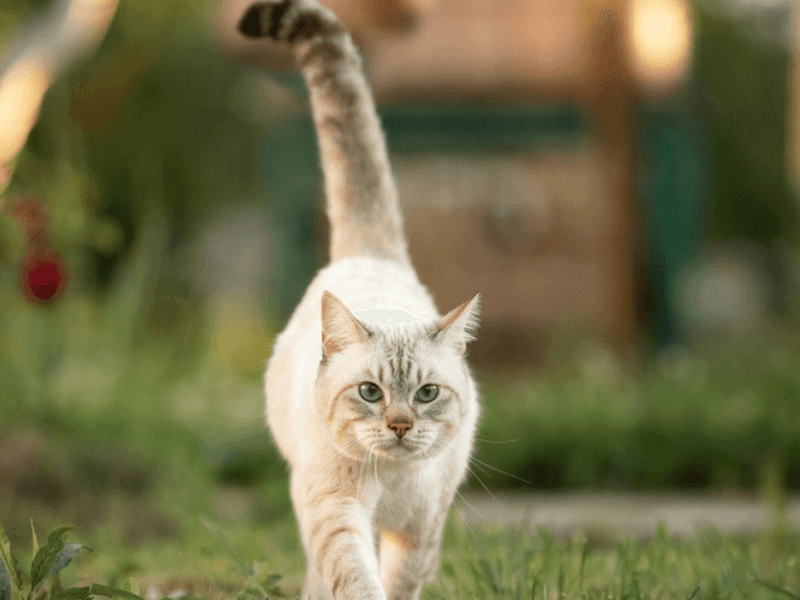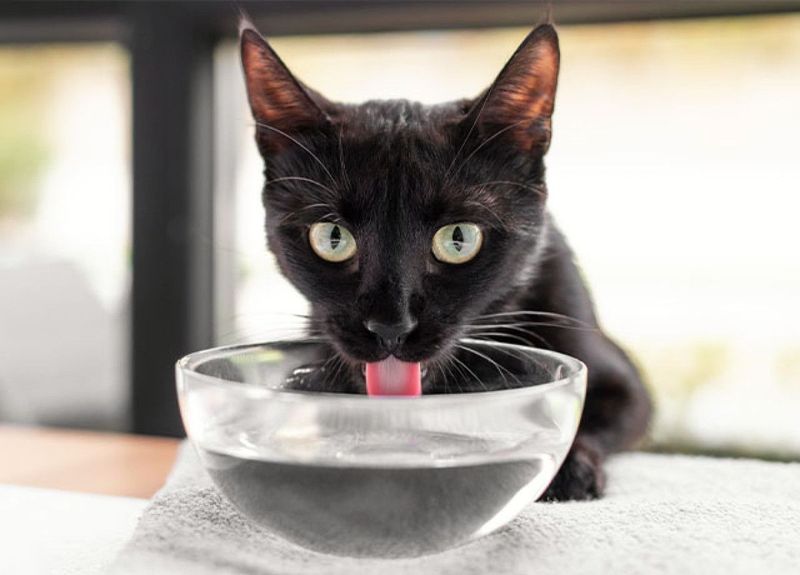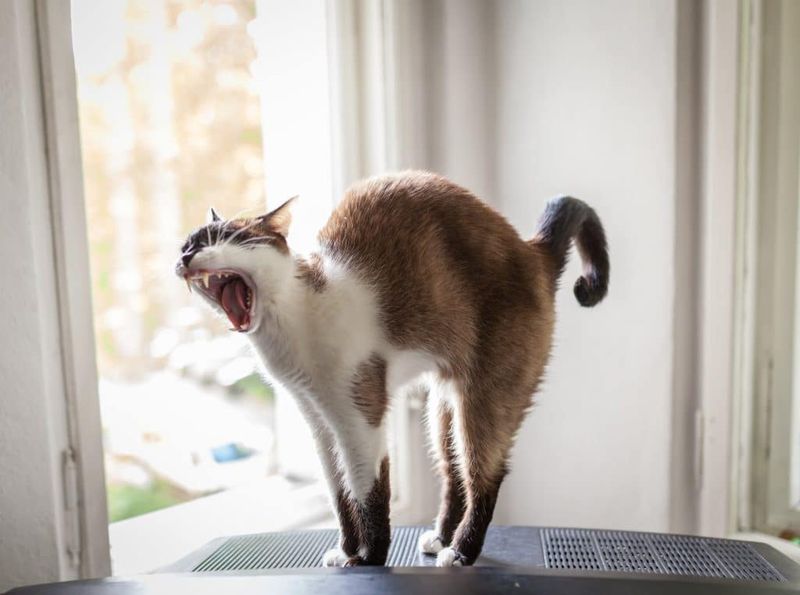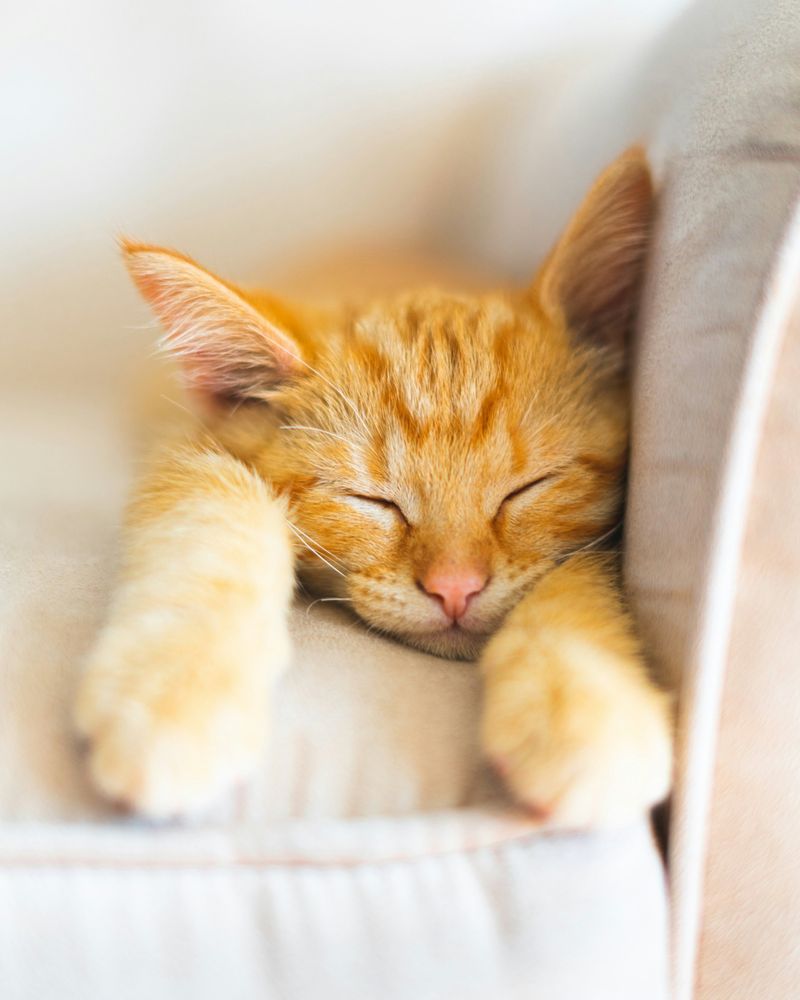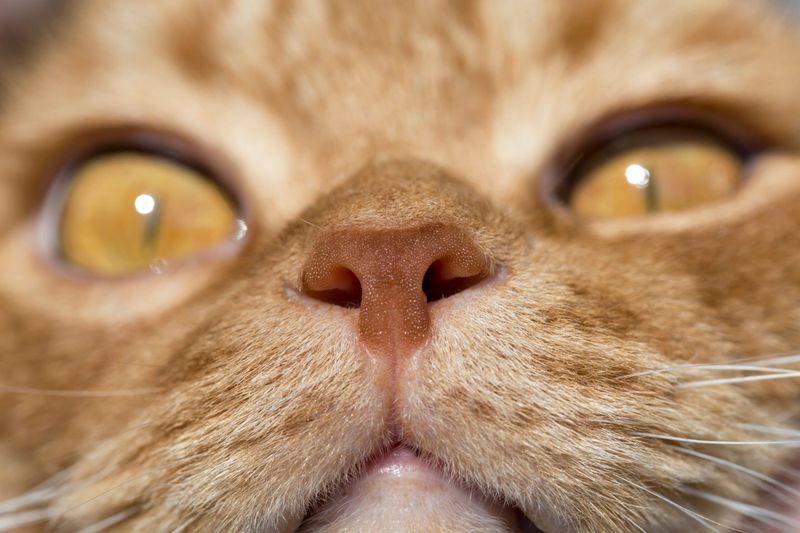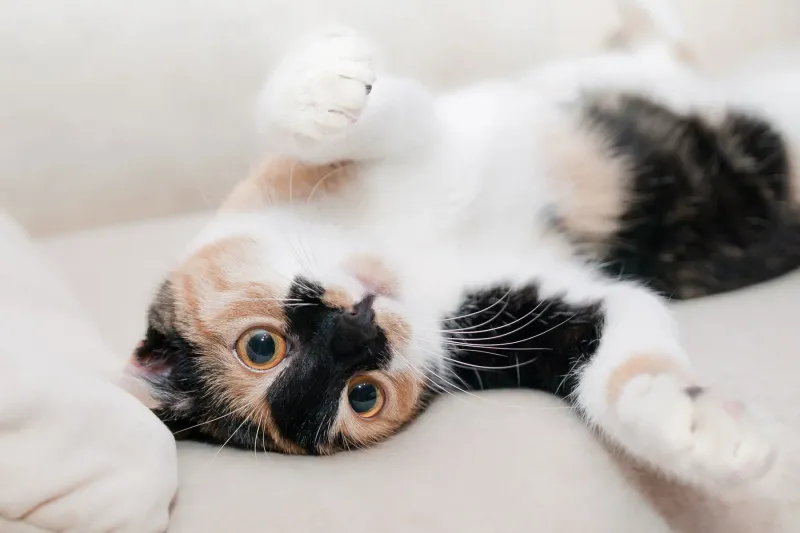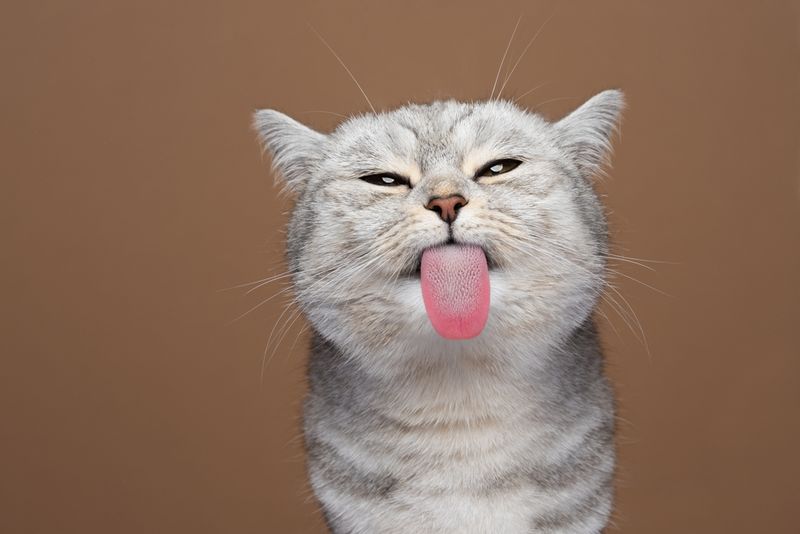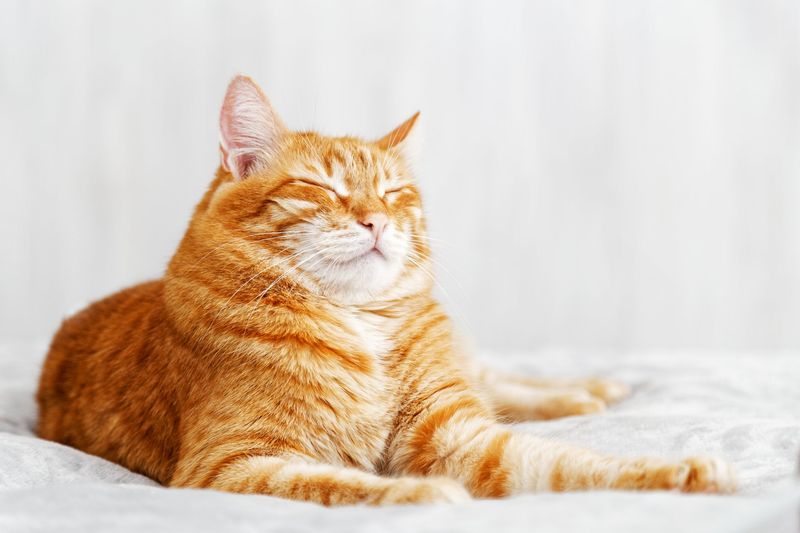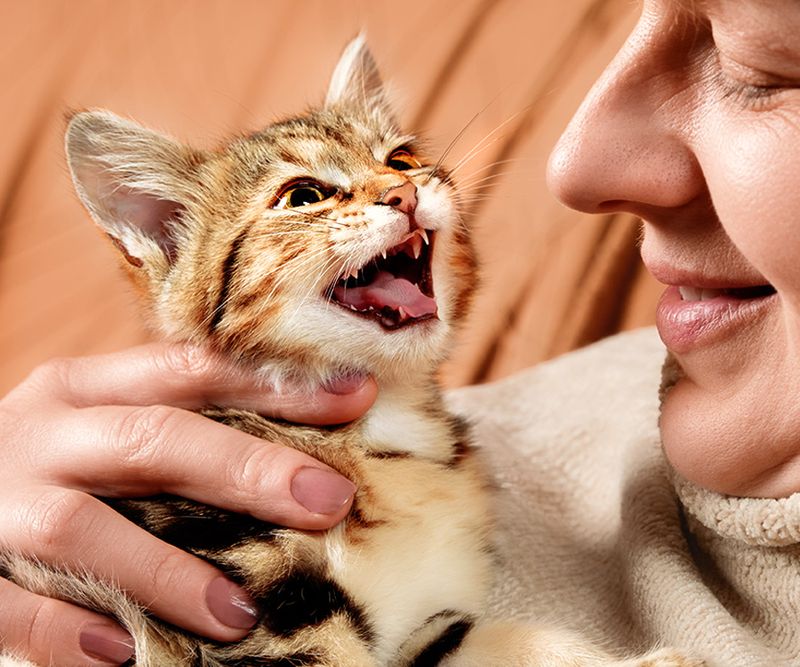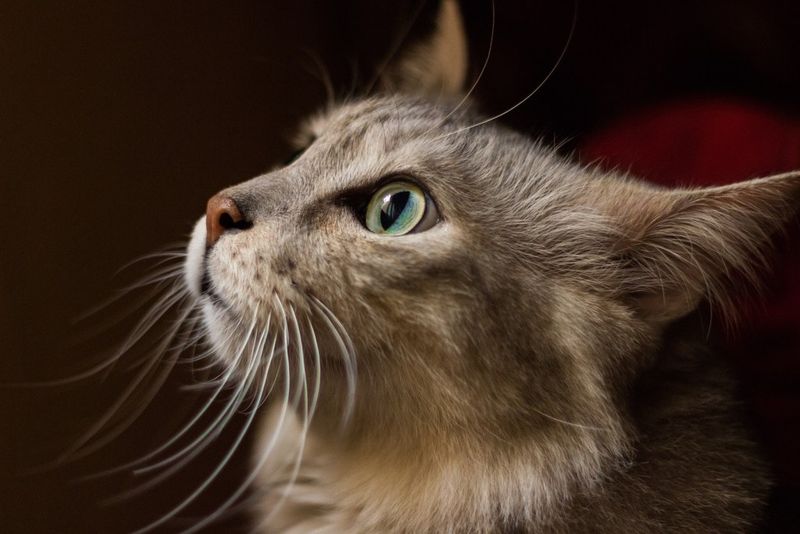📖 Table of Content:
- 1. Their Whiskers Are Precision Tools
- 2. Cats See Ultraviolet Light
- 3. Cats Can Taste The Air
- 4. Their Purr Has Healing Properties
- 5. Cats Experience Time Differently
- 6. Their Paws Contain Scent Glands
- 7. Cats Have Built-In GPS Systems
- 8. Their Ears Rotate Like Satellite Dishes
- 9. Cats See In Slow Motion
- 10. Their Tails Are Emotional Barometers
- 11. Cats Can Taste Water’s Texture
- 12. Their Spines Are Liquid-Like
- 13. Cats Experience Dreams And Nightmares
- 14. Their Nose Prints Are Like Fingerprints
- 15. Cats Perceive Vibrations Through Their Bellies
- 16. Their Tongues Function As Combs
- 17. Cats Communicate Through Slow Blinking
- 18. Their Meows Are Just For Humans
- 19. Cats See In The Dark With Their Whiskers
Cats are mysterious creatures with senses and abilities that often leave us humans scratching our heads. These furry companions experience reality in ways dramatically different from our own perception. Their unique sensory capabilities have evolved over thousands of years, making them the fascinating hunters and beloved pets we know today. Ready to discover what life is really like through your cat’s eyes?
1. Their Whiskers Are Precision Tools
Cat whiskers aren’t just adorable facial features – they’re sophisticated sensory instruments that function like built-in measuring tapes. Typically, whisker length corresponds exactly to body width, helping cats determine if they can fit through tight spaces without getting stuck.
Each whisker root connects to specialized nerve endings so sensitive they can detect air currents smaller than a breeze. This explains how cats navigate perfectly in total darkness.
Cutting whiskers disorients cats severely, equivalent to blindfolding a human. The emotional state of a cat can be read through whisker position – forward means curious, flat against cheeks signals fear.
2. Cats See Ultraviolet Light
The feline visual spectrum extends beyond human capabilities into the ultraviolet range. Unlike us, cats can see patterns and markings invisible to the human eye, including urine trails, certain flowers, and even some bird feathers that reflect UV light.
This supernatural-seeming ability helps them track prey and navigate their territory more effectively. Scientists discovered this relatively recently when studying how predators locate rodents through urine trails that glow under UV light.
Their eyes contain a reflective layer called the tapetum lucidum that enhances night vision but sacrifices some color perception. To cats, the world appears in muted blues and greens rather than vivid hues humans experience.
3. Cats Can Taste The Air
Ever notice your cat’s weird open-mouth expression with a flicking tongue? That’s their Jacobson’s organ at work—an extraordinary sensory tool on the roof of their mouth that helps them “taste” the scents around them.
This special sense, called the Flehmen response, allows them to detect pheromones and other chemical signals invisible to humans. It’s particularly useful during mating season when males track females in heat.
The information gathered goes directly to the brain’s emotional centers rather than taste centers, making it completely different from how we taste or smell.
4. Their Purr Has Healing Properties
The soothing rumble of a cat’s purr operates at a frequency of 26-100 Hz, precisely within the range shown to promote tissue regeneration and bone growth. Cats purr not only when content but also when injured or in labor, suggesting it serves as a self-healing mechanism.
Medical researchers have documented faster recovery times for bone injuries in cats compared to other animals, potentially linked to this unique ability. Some veterinarians now use vibration therapy at similar frequencies to treat certain conditions in other animals.
Human exposure to purring frequencies has been linked to decreased stress hormones and lower blood pressure. Your cat might actually be providing you with a form of natural therapy!
5. Cats Experience Time Differently
The incredible speed of feline reflexes means cats perceive time differently, with their brains processing visual input at around 70 frames per second—much faster than the 20 frames per second typical for humans.
This difference explains why cats can react with lightning speed to catch falling objects or dodge threats. A cat watching television sees flickering images rather than smooth motion because their visual processing outpaces the screen’s refresh rate.
When your cat stares intensely at seemingly nothing, they might be tracking tiny movements invisible to your slower visual system. Their perception of time slows during hunting, allowing for precise calculations of distance, speed, and trajectory.
6. Their Paws Contain Scent Glands
Those cute toe beans serve a sophisticated communication purpose. Embedded within cat paws are specialized scent glands that release unique pheromones every time they knead or scratch surfaces.
The scratching behavior we often discourage actually serves as territorial marking – creating both visible marks and invisible scent signatures. Cats recognize their own scent trails days or even weeks later, creating a complex olfactory map of their domain.
When your cat kneads your lap, they’re not just showing affection – they’re actually marking you as their property with these scent signatures! Multi-cat households maintain complex scent-based hierarchies through these markings, establishing boundaries invisible to humans.
7. Cats Have Built-In GPS Systems
Acting like a built-in GPS, cats’ inner ears contain tiny magnetic particles that detect Earth’s magnetic field, allowing them to travel great distances with remarkable accuracy.
This explains countless stories of cats finding their way home across hundreds of miles. Scientists observed cats consistently orienting themselves along north-south lines when relaxed, suggesting they maintain constant awareness of cardinal directions.
Their whiskers also contribute to this navigation system by detecting subtle changes in air pressure and wind patterns. Combined with excellent spatial memory, these abilities allow cats to create detailed mental maps of their territories – remembering every shortcut, hiding spot, and hunting ground within their domain.
8. Their Ears Rotate Like Satellite Dishes
Cat ears contain 32 muscles (compared to human’s measly 6), allowing independent 180-degree rotation of each ear. This remarkable mobility lets them pinpoint sounds with extraordinary precision – detecting the exact location of a mouse rustling 30 feet away.
The cone shape of feline ears amplifies sound waves, making their hearing roughly three times more sensitive than humans. Cats can hear ultrasonic frequencies up to 64kHz, including the high-pitched communications of rodents and even bat echolocation.
When hunting, cats continuously adjust their ear positions to create a three-dimensional sound map of their surroundings. Those adorable ear twitches you observe are actually sophisticated sound-tracking movements, calculating distance and direction of potential prey.
9. Cats See In Slow Motion
The feline visual system processes images much faster than humans, creating a slow-motion effect that gives them extraordinary reaction time. While humans need 100-150 milliseconds to process a visual scene, cats require only about 70 milliseconds.
This difference explains their uncanny ability to catch flying insects mid-air or dodge moving objects. To a cat, a falling object appears to descend more slowly, giving them extra time to position themselves perfectly.
Their retinas contain a higher percentage of motion-detecting cells than color-detecting ones, prioritizing movement over detail or color. Even elderly cats maintain this quick visual processing, though their overall vision may deteriorate with age.
10. Their Tails Are Emotional Barometers
More than just a furry appendage, a cat’s tail is a complex emotional signaler. When the tail stands tall with a slight tip curve, your cat is feeling joyful; if it’s held low, they might be feeling shy or submissive.
The speed and direction of tail movement provides critical emotional context. Quick lashing suggests irritation or overstimulation, while gentle swaying indicates focused attention. Cats express affection through a unique quivering tail motion reserved for preferred companions.
Even tail position during sleep reveals emotional states – a fully relaxed, extended tail shows complete trust in their environment. Cats with partial tail amputation develop alternative body language, often using ear positions more prominently to compensate.
11. Cats Can Taste Water’s Texture
Specialized receptors on a cat’s tongue pick up on water’s texture and minerals rather than flavor. That’s why running water is often more appealing—it’s literally a fresher sensation.
Their ancestors evolved in desert environments where water quality determined survival. The distinctive lapping technique cats use involves creating a column of water that defies gravity, allowing them to drink without submerging their sensitive whiskers.
Scientists at MIT discovered cats precisely balance gravity and inertia when drinking, closing their jaws at exactly the right moment to maximize water intake. This drinking method is so efficient that engineers study it to improve fluid dynamics in various applications.
12. Their Spines Are Liquid-Like
Feline spines contain extremely elastic cushioning between vertebrae, allowing cats to rotate their bodies 180 degrees while falling. This flexibility explains how cats can squeeze through openings seemingly smaller than their heads and always land on their feet.
Unlike human spines with rigid connections, cat vertebrae connect through muscular attachments that permit extraordinary twisting motions. Their shoulder blades attach to the body only by muscles rather than bone, essentially functioning as floating joints.
A specialized neural pathway triggers automatic body realignment during falls, completing a full rotation in as little as 12 inches of descent. This remarkable system works even in kittens as young as 7 weeks old, though they perfect the technique through practice.
13. Cats Experience Dreams And Nightmares
During REM sleep, cats process daily experiences through dreams just like humans. Their twitching whiskers, paws, and occasional vocalizations during sleep indicate active dreaming – often replaying hunting sequences or social interactions.
Brain scans reveal similar neural patterns between sleeping cats and those actively hunting, suggesting they mentally rehearse important activities while asleep. Cats experience approximately 5-10 minutes of REM sleep during each 30-minute nap cycle.
Nightmares appear common in cats with trauma histories, sometimes causing them to wake suddenly or vocalize in distress. Consistent sleep routines and safe sleeping environments can reduce these episodes, much like in humans with sleep disorders.
14. Their Nose Prints Are Like Fingerprints
Every cat possesses a unique nose print pattern that remains unchanged throughout life. The combination of ridges, bumps, and texture on a cat’s nose creates an identifier as distinctive as human fingerprints or iris patterns.
Some pet identification systems now use nose print scanning as a biometric identification method. The nose surface contains a delicate pattern of sweat glands that create this unique texture, which cats maintain through regular grooming.
Beyond identification, a cat’s nose changes color based on temperature and health status. A healthy cat typically has a cool, slightly moist nose, though contrary to popular belief, a warm or dry nose doesn’t necessarily indicate illness – especially after napping.
15. Cats Perceive Vibrations Through Their Bellies
Hidden in a cat’s abdomen are specialized nerve endings that pick up vibrations too faint for humans to notice. When resting on a surface, cats can sense the gentle footsteps of nearby animals, giving them an early warning.
This sensitivity explains why cats often lie on seemingly uncomfortable surfaces like concrete or wooden floors – these materials transmit vibrations more effectively than soft bedding. Cats can detect earthquake tremors minutes before humans perceive them, often displaying anxiety behaviors before seismic events.
When relaxed and feeling secure, cats expose their bellies not just as a sign of trust but also to maximize this sensory input from their environment. Their whiskers amplify this ability by detecting air pressure changes caused by moving objects.
16. Their Tongues Function As Combs
Those rough textures on a cat’s tongue come from papillae, tiny backward-facing spines that work like miniature combs. Crafted from keratin, they scoop away loose fur and dirt, making grooming both effective and precise.
Each tiny spine contains a U-shaped cavity that wicks saliva directly to the hair roots, distributing natural oils throughout the coat. This design is so effective that engineers have created biomimetic brushes based on cat tongues for applications ranging from cleaning to applying medications.
The papillae also serve as sophisticated food handling tools, allowing cats to strip meat from bones and control the direction of food in their mouths. These spines explain why cat kisses feel distinctly sandpaper-like against human skin.
17. Cats Communicate Through Slow Blinking
When a cat gives you a slow blink—often called a “cat kiss”—it’s sharing one of its most heartfelt messages. That deliberate, gentle closing of their eyes means, “I trust you enough to let my guard down.”
Scientific studies confirm this behavior triggers positive emotional responses in both cats and humans. Cats are more likely to approach people who slow-blink at them first, suggesting this serves as a universal feline greeting.
The duration and completeness of the blink correlates with the level of affection being expressed. Half-closed eyes indicate contentment, while fully closed eyes represent deep trust. Try slow blinking at your cat and watch as they likely return the gesture!
18. Their Meows Are Just For Humans
Adult cats rarely meow at each other in nature – this vocalization evolved specifically to communicate with humans. Kittens meow to their mothers, but wild adult cats primarily use body language, scent, and other vocalizations like growls or hisses with each other.
Domestic cats have developed an extensive “meow vocabulary” that varies in pitch, length, and intensity to convey different needs to their human companions. Most cats create unique sounds for specific requests – distinctive meows for food, attention, or access to outdoor spaces.
Cats living with humans typically vocalize far more than feral cats, having learned that meowing successfully triggers human responses. Your cat has essentially trained itself to communicate in a language you understand!
19. Cats See In The Dark With Their Whiskers
Beyond their exceptional night vision, cats navigate darkness using whiskers as sophisticated touch sensors. These specialized hairs detect minute air currents bouncing off objects, creating a three-dimensional map of their surroundings even in pitch blackness.
The whisker follicles connect to neural networks so sensitive they can detect air displacement smaller than a breeze. Cats can determine an object’s size, shape, and texture without visual input, using whiskers to gauge distances with extraordinary precision.
When hunting at night, cats hold their whiskers forward to maximize environmental feedback. This explains why cats can navigate familiar spaces perfectly after sudden power outages – they’re literally feeling their way through darkness using air currents that bounce off furniture.
